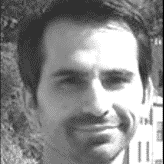Be there in 2023 when embedded world Exhibition&Conference with its highly focused segments Embedded System Technologies, Distributed Intelligence and Internet of Things meets the experts from all over the world again at the exhibition site Nuremberg from March 14-16, 2023.
Participating Sessions:
-
Presenter:

Mikko Savolainen Silicon Labs Date and Time: 15 March, 13:45 CET
Description: Commercial and industrial applications like lighting require large-scale, low-power device networks where thousands of devices need to communicate with one another efficiently, reliably and securely. Commissioning and maintenance of such networks must also be easy and efficient in order to reduce the total cost of ownership. Bluetooth mesh 1.1 is the latest edition on the Bluetooth SIG’s mesh networking standard and it introduces a plethora of new features addressing the needs and challenges of large commercial networks including for example: standardized OTA updates, remote provisioning, certificate-based provisioning and directed forwarding. Silicon Labs is one of the key contributors to the development and implementation of Bluetooth mesh standard.
- New Bluetooth® Technology: Periodic Advertising with Response Will Bring Digital Benefits to Physical Stores
-
Presenter:

Martin Woolley
Senior Developer Relations Manager, EMEA & China
Bluetooth SIGBluetooth® technology defines an operating mode called periodic advertising which allows a device to broadcast data in accordance with a deterministic, precisely timed schedule. This capability has been enhanced to create the new Periodic Advertising with Response (PAwR) operating mode. PAwR allows devices that receive periodic advertisements to transmit responses back to the broadcaster. PAwR makes periodic advertising a bidirectional communication mode and allows large, one-to-many topologies to be created. PAwR will enable the creation of new products governed by new Bluetooth® profiles. The Electronic Shelf Label (ESL) profile brings the benefits of standardisation to the world of electronic shelf labels, which deliver new customer service and efficiency benefits to physical stores. Bluetooth ESL leverages periodic advertising with responses (PAwR). This talk will explain the new Bluetooth PAwR feature and use the ESL profile to illustrate how it will enable further digitalization of physical stores.
Date and Time: 15 March, 14:15 CET
- Dynamic Proxy Switching for Enhanced Connection Reliability in a Bluetooth Mesh Network
-
Presenters:


Prashant Pandey & Saurabh Rawat STMicroelectronics Date and Time: 15 March, 14:45 CETDescription: Bluetooth Mesh Profile is a recent Bluetooth specification that allows Bluetooth nodes to participate in a large network employing a multi-path & multi-hop mesh topology. Bluetooth Mesh uses a controlled flooding mechanism where network nodes use advertising packets as the primary mode of communication. Many BLE devices like smartphones do not fully support this mechanism and need to connect over a GATT connection via “proxy” nodes. Mobile devices may move around the network and sometimes get too far from the current proxy node thus causing a poor connection. The prevalent mechanism is to switch to another proxy node if the current proxy connection disconnects, however, detecting the dis-connection state takes several seconds. The presented paper defines a scheme involving background monitoring of connection quality using several parameters and switching proxy proactively. This action maintains a stable connection while the mobile node (phone) moves around in the network. The paper also describes mechanisms to avoid packet loss while proxy switching is happening. This paper presents the results of experiments using several variations of the proxy switching schemes in different network scenarios. The paper intends to help readers design more robust Bluetooth Mesh Profile compliant networks.
- Challenges and Solutions for Wireless Audio Streaming in Embedded Systems
-
Presenter: Clement Chaduc, Texas Instruments Norway Date and Time: 15 March, 16:00 CET
Description: Realtime audio transmissions over a wireless link, in other words wireless audio streaming, is omnipresent in our day-to-day lives. It enables use cases such as human-to-human communication (walkie talkies), entertainment (headsets, karaoke machines), medical (hearing aids), home control, automation, security, etc. Wireless audio streaming ubiquity should not make systems’ designers forget about its complexity. By understanding the challenges inherent to a technology and learning about existing approaches to work around these, designers have the possibility to produce systems more adapted to users’ expectations. This paper introduces several technical challenges encountered when designing systems implementing wireless audio streaming. For each identified element, one or several approaches are suggested, presented and explained in order to help producing more efficient systems. The journey starts with a discussion around audio quality and what it means in an embedded context. Then comes a review of the main functional blocks including, sampling, compression, interfacing with the communication protocol, and playback. In the end, a global approach is suggested, in order to evaluate the feasibility and improve the reliability of the whole system.
- Disposable Medical Devices – Design Principles for Power Management, Bluetooth Low Energy, and Silicon-level Cryptography
-
Presenter:

Nicola Wrachien Silicon Labs Date and Time: 15 March, 16:30 CETDescription: The industry has been working for decades to make disposable medical devices viable to increase hygiene, reduce viral spread, simplify logistics, and bring safer, cost-efficient medical devices to more people worldwide. The challenge with wearable disposable medical devices is, however, their small size, limiting battery capacity. How can we minimize energy consumption while enabling reliable computing and Bluetooth communication for the entire device lifetime of up to 30 days, even after months or years of shelf life in the supply chain? How can we allocate sufficient power for robust cryptography to protect the device’s secret keys and user data, avoiding security and privacy threats during the period of active use and after disposal? This session describes the recent advancements in Bluetooth Low Energy system-on-chip (SoC) technologies and silicon-level cryptography that can finally make disposable medical devices viable for global mass production. Finally, the session explains the most important power and security design principles for developers working with disposable medical devices.
- Design and Evaluation of Localization and Tracking Algorithms Using Bluetooth Low Energy in MATLAB
Presenter: Dr. Ahmad Saad, The MathWorks Date and Time: 15 March, 17:00 CET
Description: This paper presents an end-to-end workflow for the design and evaluation of high-accuracy positioning and tracking algorithms using Bluetooth Low Energy (LE) in MATLAB. At the transmitter side, we generate standard-compliant Bluetooth LE direction-finding waveforms and send them through a wireless channel model to simulate RF impairments. At the receiver side, we perform packet detection, recover the header bits, and perform cyclic redundancy check (CRC) detection as well as extract the IQ samples for later processing. Depending on the number of locator nodes, we estimate the location of a Bluetooth LE node either using angulation (if there are two or more locators are available), or using the distance-angle if only one locator is available. Both can use either Angle of Arrival (AoA) or Angle of Departure (AoD) direction finding methods. Next we show how to improve the position accuracy by using a Kalman filter and analyzing the performance. We also demonstrate the seamless integration of all the processing steps in the flexible environment of MATLAB.
Related Resources:







